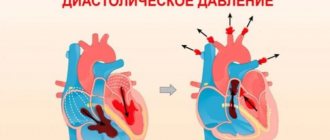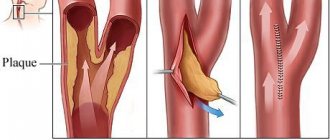May 23, 2012
Did the examination show elevated blood cholesterol levels? Find out how to adjust your diet.
Elevated blood cholesterol levels are one of the most serious risk factors for developing cardiovascular diseases.
Cholesterol itself is not dangerous for the body and is even necessary for a number of vital processes. However, an excess amount of this substance can settle on the walls of blood vessels and clog them.
Therefore, to prevent cardiovascular diseases, experts recommend not to indulge in foods rich in cholesterol.
Foods with high cholesterol levels
The disease of excess lovers
Atherosclerosis is one of the most common vascular diseases. It can be caused not only by excess nutrition, but also by bad habits.
1. Most cholesterol is found in fatty meats.
- beef and pork. Try not to buy fatty brisket, neck, tenderloin, ribs and other cuts of carcass that contain a large amount of fat.
Remember that a large amount of hidden fat
It is even found in pork fillet. A good alternative to such a product would be lean chicken and turkey.
2. Avoid such by-products
, like the liver, lung and brains. One serving (about 200 g) can contain most of the daily value of cholesterol.
3. Increased Saturated Fat and Cholesterol in Processed Meats
: ham, sausages, sausages, canned meats and smoked meats.
Even boiled sausage without lard contains hidden fats. In addition, these foods contain too much salt.
Fatty poultry also contains a lot of cholesterol.
- goose or duck. Avoid frying these foods in fat, trim off excess fat, and choose dark meat from the breast or legs of the bird after removing the skin.
5. Eggs are often accused of containing excess cholesterol. However, compared to fatty meat or smoked meats, eggs contain so much of this substance.
However, experts recommend limiting your consumption to one egg per day.
or prepare meals using only proteins. You shouldn’t completely give up eating eggs: they contain many useful substances.
6. Major suppliers of cholesterol are butter, cheeses, sour cream and full-fat yoghurts.
, which usually also contain large amounts of added sugar.
Nutritionists recommend consuming skim or low-fat milk and other dairy products containing no more than two and a half percent fat.
7. The lion's share of cholesterol enters the human body through semi-finished products, industrial baked goods, and desserts.
and fast food. These foods contain trans fats as well as high amounts of saturated fat.
Eating fish for high cholesterol
If you have high cholesterol, you can eat fish, as it has a number of components that can stabilize lipid levels. Namely:
- Squirrels. Proteins in fish products are among the most easily digestible. In addition, in terms of quantity they are not inferior to meat products. With seafood, the body receives many amino acids, including essential ones.
- Vitamins A and E, group B. These vitamins promote normal metabolism, exhibit anti-atherosclerotic effects (especially vitamin E due to its antioxidant effect) and can lower cholesterol levels.
- Elements and their connections. Phosphorus, copper, ferrum, potassium, calcium, fluorine, magnesium, zinc - and these are not all the ions that we can get with fish products. Each of these elements is involved in hundreds and thousands of reactions in tissues and organs. Magnesium and potassium are vital for the proper functioning of the heart. The presence of fish in the diet at least once a week can reduce the risk of myocardial infarction in cholesterol patients by almost 20%.
- Fish fat. It contains fatty acids - Omega-3 and 6, which have a pronounced anti-atherogenic effect. These compounds circulate through blood vessels and cleanse the vascular endothelium of lipid deposits and cholesterol plaques.
What fish is best to eat if you have high cholesterol?
Useful and harmful varieties
The healthiest and safest fish for cholesterol is salmon . They are the most effective in combating lipid metabolism disorders. They are high in Omega-3 fatty acids, which stimulate a decrease in the concentration of bad cholesterol in the body. In addition to salmon, such delicacies as sole, herring, mackerel, but properly prepared according to a specific recipe, would also be appropriate. The salted herring that we are most familiar with does not have the necessary set of nutrients.
Salmon breeds
Red varieties of fish contain high amounts of fatty acids, in particular Omega-3, which have a pronounced anti-atherosclerotic effect - they trigger the destruction of atherosclerotic plaques in the vascular walls. Therefore, they can be recommended for patients with high cholesterol. 100 grams of fish fillet from these marine species contains the daily requirement of Omega-3 for humans.
The following salmon fish are recommended for consumption
- salmon,
- pink salmon,
- chum salmon,
- red salmon.
River fish
In terms of saturation of FAs (fatty acids), microelements and macroelements, river species are inferior to sea species . The composition of the fats of freshwater species - its components and chemical structure are similar to those of birds, while in marine varieties the biochemical configuration of lipids is unique. it is allowed to consume river fish if you have high cholesterol , but you should not expect a clear therapeutic effect .
Smoked, dried and dried fish
These types of fish are not recommended for consumption if you have high cholesterol. Smoked fish contains many substances that are carcinogenic - in addition to the fact that they did not help reduce the concentration of bad cholesterol, they can become risk factors for the development of oncology - they contribute to the formation of atypical cells.
Sun-dried and dried fish contain a lot of salt, which affects the body’s water-salt metabolism and can provoke an increase in BCC (circulating blood volume). Their accumulation in the body serves as the basis for the progression of arterial hypertension.
How to give up foods rich in cholesterol?
1. Remove from the kitchen
everything that contains saturated fat: margarines, processed foods, sausages and canned goods, snacks and cookies. If these products are not at home, you will not be able to eat them.
the “perimeter rule” at the grocery store.
. Typically, fresh fruits, vegetables, lean meats and low-fat dairy products line the walls, while processed foods, canned goods and prepared foods are found in the interior aisles of the store. You should literally “walk the wall.”
two fresh vegetables or fruits every time
, which you haven’t tried yet or haven’t taken for a long time. Apples, berries, bananas, carrots, broccoli are an important source of fiber, which lowers blood cholesterol levels.
4. Read the ingredients of the product carefully. High fat and calorie content indicates that the package contains food that may contain too much cholesterol.
Wine does not lower cholesterol levels
Various publications often contain information that red wine lowers cholesterol levels due to the polyphenols it contains. Unfortunately, this is a common myth.
5. Make friends with unsaturated fats
. They are not only rich in healthy vitamins and Omega-3 complex, but also reduce cholesterol levels. These fats are found in nuts, sea fish, olive oil and sunflower seeds.
6. Include whole grain products in your diet. The fiber they contain helps bind cholesterol, which prevents it from entering the blood.
7. Don't give up meat
. Learn to choose it correctly. Lean chicken, turkey and lean beef are suitable. You can also diversify your diet with sea fish, which contain unsaturated fats.
8. Make fruits and vegetables an important part of your diet. They have very little fat, are low in calories and contain a large amount of vitamins.
Cholesterol content in different types of fish
If we consider the known and popular varieties, then based on their composition at the molecular level, we get the following:
- water – about 50-80%,
- proteins – about 15-20%,
- fat – up to 33%
- mineral molecules with micro and macroelements – 2-6%.
Does fish have cholesterol? Yes, it is contained among other fats, but its volume depends on the type of fish product.
The following table shows the most popular types and their cholesterol content (values are given in milligrams per 100 grams of fillet) according to official data from the USDA (United States Department of Agriculture):
| Type of fish, 100 g | Cholesterol content, mg |
| Carp | 200 |
| Sardine | 142 |
| Mackerel | 95 |
| Pollock | 86 |
| Chinook | 85 |
| Swordfish | 78 |
| Chum salmon | 74 |
| Trout | 74 |
| Red salmon | 63 |
| Skipjack tuna | 60 |
| Mikizha | 59 |
| Pink salmon | 55 |
| Atlantic salmon | 55 |
| Shark | 51 |
| Halibut | 46 |
| Atlantic cod | 43 |
| Horse mackerel | 40 |
| Ascidia | 7 |
Knowing the concentration in mg of cholesterol among the list of fish fillet fats, we can draw a conclusion about what fish can be eaten if you have high cholesterol, and what types of fish are contraindicated if you have excess cholesterol. Before introducing seafood into your diet, you must remember that for patients with atherosclerosis, the daily dose of cholesterol they receive from food should not exceed 300 mg per day , taking into account that the diet should consist mainly of hypocholesterol products. Of course, this figure is arbitrary and varies depending on the severity of the disease, its form, age and other important factors.
Beneficial features
Fish is one of the healthiest foods for humans. Dishes made from high-quality sea fish fill the body with easily digestible protein compounds.
Effects of fish on the body:
- Corrects the functioning of the thyroid gland and the activity of the adrenal glands;
- Controls the functioning of the endocrine system;
- Calms the nervous system and restores all its centers;
- Increases emotional mood;
- Memory improves and intellectual abilities increase;
- Sleep becomes stable;
- Metabolic processes in the body return to normal and metabolism is restored.
With an increased cholesterol index, fish dishes reduce the low molecular density lipoprotein index and prevent the development of such serious pathologies:
- Pathology thrombosis or thromboembolism;
- Hypertonic disease;
- Systemic atherosclerosis;
- Rapid heartbeat - tachycardia;
- Heart rhythm disturbance - arrhythmia;
- Ischemia of the cardiac organ - angina pectoris;
- Myocardial infarction;
- Brain stroke of ischemic or hemorrhagic type.
Prevents the development of tachycardia
Fermented milk drinks
When cholesterol levels in the blood increase, fermented milk drinks with low fat content are recommended - kefir, yogurt, drinking yogurt (without fruit additives). Not only will they not harm your health, but they will also help remove excess LDL from the body.
The beneficial properties of fermented milk drinks include:
- maintaining the balance of intestinal microflora;
- prevention of obstipation (constipation);
- weight loss;
- cleansing of toxic waste;
- maintaining the functioning of hepatocytes and pancreatic cells.
The cholesterol component and energy value of drinks depends on the initial fat content:
| Fat % | Squirrels | Carbohydrates | Kcal/100 g | Cholesterol in mg/100 g |
| 1 | 2,8 | 4,0 | 40 | 6 |
| 2,5 | 2,9 | 4,0 | 53 | about 8 |
| 3,2 | 2,9 | 4,1 | 56 | 10 |
Nutritionists recommend drinking a glass of kefir or yogurt every night at night (1-1.5 before bedtime).
Animal fats in dairy products
Lipoproteins are also found in most dairy products. The amount is mainly determined by the fat content. Below is a table of cholesterol content in dairy products.
| Products | Cholester. mg/ 100g | Products | Cholester. mg/100g |
| Cream 10% | 30-40 | Kefir without. | 3 |
| Cream 20% | 75-80 | Full fat kefir | 10-12 |
| Cream 30% | 100-110 | Serum | 2-3 |
| Cottage cheese 2% | 2-6 | Curdled milk | 5-8 |
| Cottage cheese 6% | 12-15 | Cheese | 10-100 |
| Sour cream 10% | 30-35 | Goat's milk cheese | 12-40 |
| Sour cream 20% | 90-100 | Yogurt classic. | 10-15 |
It is clear from the table that low-fat dairy products were the least harmful. And the greatest harm to the body can be caused by cheeses, fatty sour cream and cream.
Fish for atherosclerosis
If the phenomenon of elevated blood cholesterol persists for a sufficiently long period of time, then the development of atherosclerosis becomes very likely. This is a disease in which that same excess cholesterol begins to stick to the vascular walls, forming atheromatous plaques and obstructing blood flow.
We already know that fish fillets (especially salmon) contain many useful fatty acids. And they, in their action, are cholesterol antagonists, i.e. on the contrary, they reduce its level in the bloodstream during atherosclerosis, inhibit synthesis in the liver, cleanse the vascular endothelium of atherosclerotic plaques, and in general, have a generally good effect on lipid metabolism. However, you need to remember that the amount of fish dishes should be dosed and agreed with the treating doctor, because cholesterol levels and the characteristics of the course of atherosclerosis are different for everyone. According to generally accepted medical recommendations, with this diagnosis, about 160-200 grams of fish 2 times a week will be quite enough.
Results
Cholesterol is of animal origin. It is not found in plants. Milk and its derivatives are animal products, so cholesterol is one of the components of milk lipids.
Milk can be consumed for hypercholesterolemia and atherosclerosis, but it is necessary to monitor the fat content of the product. The higher the fat percentage, the more cholesterol. A safe daily intake is considered to be 1 liter of 2.5% milk per day, provided that fats in the rest of the daily diet are controlled.
Possible harm and contraindications
Despite the enormous benefits of fish, it can be harmful. The fact is that freshwater and marine life tend to accumulate harmful chemicals from water. Salmon and tuna are especially likely to accumulate lead, arsenic and other heavy metals.
Some species (sturgeon, trout) are raised in special farms. Unscrupulous manufacturers use various additives to add color and increase the size of carcasses.
It is strictly contraindicated to eat this product in its raw form, especially for pregnant women and small children. Parasites are often invisible to the human eye, but cause enormous harm to the body.
It is also prohibited to eat:
- unfamiliar fish species;
- caught in “suspicious bodies of water”;
- sold in unauthorized places without appropriate documents (on the street), since it is unknown where and when the fish were caught;
- carcasses with external damage, ulcers, unhealthy plaque, and unpleasant odor.
How much milk can you drink per day?
Every day the human body requires about 1000 mg of lipoproteins for normal functioning. About 70% of these substances are produced by the liver and other human organs.
It turns out that the daily norm of lipoproteins, which the body can safely obtain from food, is no more than 300 mg.
Taking into account the entire daily diet, you can easily calculate how many glasses of milk or dairy products of what fat content can be safely consumed by a person. If the product is low-fat, you can drink more of it. Products with high fat content should be consumed with extreme caution. But when calculating, it is necessary to take into account animal fats that come from foods other than dairy.
To know exactly how much cholesterol is in milk, you need to carefully read the label on the package. The manufacturer must indicate this indicator.
Oyster mushrooms for lowering cholesterol
Oyster mushrooms are a variety that is famous for its antitumor and antiatherosclerotic effects. Oyster mushrooms practically do not accumulate negative substances from the environment around them. According to scientific research, if the daily diet contains 1% oyster mushrooms, then harmful blood cholesterol can decrease by almost 10% over time. In addition, this variety is a good prevention of hypertension - the number of hypertensive crises and episodes of exacerbation of hypertension are reduced.
How to eat oyster mushrooms for high cholesterol? These mushrooms are suitable for almost any culinary recipe. Most often for cholesterol pathologies, they are used in dried form for making soups. In addition to oyster mushrooms, you can also add onions, herbs, cabbage, carrots, and durum wheat pasta to the dish.
We select a quality product in the store
In order for a product to bring maximum benefit and pleasure, it should be chosen correctly. It is better to purchase fish in large stores, where they can provide a certificate.
The chilled version is preferable, as you can ensure its freshness. For frozen fish, expiration dates should be indicated on the packaging; there should not be a lot of ice in the bag, this may indicate repeated freezing.
Some rules for choosing chilled fish:
- Buying medium-sized carcasses indicates the “youth” of the fish.
- The surface of the fish should be smooth, without ulcers or plaque.
- When you press on the pulp, it should return to its original appearance in a few seconds. Otherwise, it's an old copy.
- The smell of a fresh product is not sharp, subtle, which indicates its freshness.
At home, store fish for no longer than 2 days in the refrigerator or up to 2 months in the freezer.
Proper use and preparation
If you have high cholesterol, it is important that the fish is cooked properly. Allowed to boil, bake or steam. You can also cook fish cutlets. When cooked, the amount of cholesterol in fish decreases slightly. The most optimal side dish for fish are vegetables (stewed, baked, raw), fresh herbs, and a little boiled rice.
It is prohibited to eat fish prepared in the following ways:
- Fried, especially breaded. In this case, the amount of fat, carcinogenic substances that provoke the development of cancer tumors, increases.
- Smoked. Excess salt and carcinogens have a negative effect on the body.
- Salty. Salt retains fluid in the body and increases blood pressure.
- Raw (in Japanese dishes). In the absence of heat treatment, the product retains parasites, E. coli and other dangerous components.
- Paired with fried potatoes. Despite the popularity of this dish, it is prohibited if you have high cholesterol.
Best Recipes
If a doctor advises you to follow a diet, this does not mean that the menu will be boring and bland. There are many different recipes that you can use to prepare delicious dietary fish dishes.
Steamed cod with vegetable side dish
Marinate cod pieces (about 1 kg) in lemon juice mixed with garlic, soy sauce, and sunflower oil for 25 minutes. Liquid ingredients are taken in approximately 50 ml, soy sauce - about 30 mg, as it contains a lot of salt. You can add a mixture of Provencal herbs to the marinade.
For garnish, take potatoes, zucchini, cauliflower in equal parts, cut into cubes. Place vegetables-fish-vegetables in the bowl of a multicooker or steamer. Set to steam cooking mode. Cook for no more than 20 minutes. Serve the finished dish with dill and lemon slices.
Thanks to the spicy marinade, the dish acquires an exquisite taste, and vegetables will add satiety to it.
Rainbow trout in foil
Clean, gut, and rinse medium-sized trout. Mix greens (parsley, dill, marjoram sprig) with vegetable oil. Stuff the belly of the trout with this mixture and add a slice of lemon. Wrap the fish in foil to prevent the juices from leaking out during cooking.
Place the fish in a hot oven and bake for about 25 minutes. Serve trout in foil or place on a platter. It will be complemented by boiled rice and fresh herbs. This dish becomes very tender and juicy, since the foil retains all the juice that is released.
Daily portion of milk
According to WHO standards, an adult can drink 1000 ml of cow's milk with a fat content of 2.5% per day.
This serving contains 25% calcium, 22% vitamin B2, 21% vitamin D, 18% phosphorus, 13.5% protein, about 25-30% cholesterol (daily value). When compiling a daily menu, all foods containing cholesterol are taken into account.
If you drink a liter of milk (2.5%) daily, you must ensure that the total amount of lipophilic alcohol in the rest of your food does not exceed 70%.
It turns out that other products of animal origin account for: 200-300 mg of cholesterol for a healthy person, 100-150 mg for hypercholesterolemia, 70-100 mg for patients with atherosclerosis.
Hypercholesterolemia and atherosclerosis
Lipophilic alcohol, cholesterol (cholesterol) is one of the most important elements of biochemical processes in the body. As part of cell membranes, it protects cells from negative temperature effects, participates in the synthesis of steroid and sex hormones, the production of bile acids, supports interneuron connections, and helps the body absorb fat-soluble vitamins.
Endogenous cholesterol is produced by hepatocytes (liver cells); it accounts for 80% of the total volume. The rest is exogenous cholesterol, obtained by the body from animal fats consumed in food. Hypercholesterolemia is the result of a failure of lipid (fat) metabolism. In most cases, the disorder is caused by an unhealthy passion for fatty and sweet foods against a background of physical inactivity.
After cholesterol is absorbed into the blood, it combines with proteins, forming lipoproteins of different densities. Low and very low density lipoproteins (LDL and VLDL) are responsible for delivering fats to body tissues. They are commonly called “bad cholesterol”. High-density lipoproteins (HDL or “good” cholesterol) transport excess LDL and VLDL to the liver for processing and excretion from the body.
When the amount of low-density lipoproteins exceeds the norm, they settle on the epithelium (the inner wall of arteries and capillaries), clinging to microcracks. Thus, cholesterol plaques are formed. Normalization of lipid metabolism is achieved by adjusting the diet and taking special medications.
Information: Damage to the epithelium is caused by alcohol and nicotine addiction, hypertension, intoxication, chronic endocrine and hemolytic pathologies, and hypovitaminosis.











